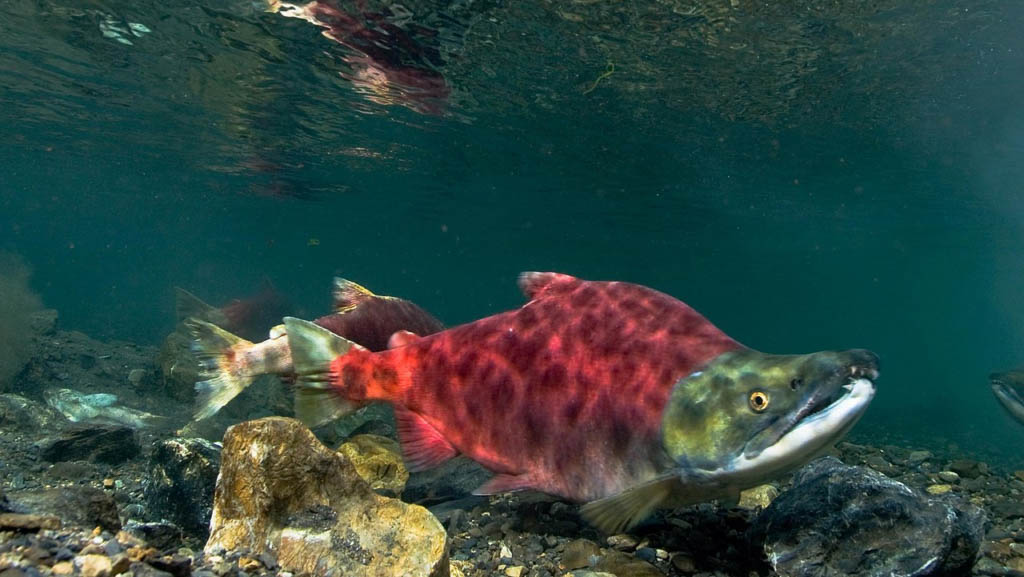For one of the dives of the year’s highlights, Garrett Clement got together with a couple of friends for a Campbell River salmon run via snorkelling.
An annual fish migration phenomenon known as a salmon run occurs when many salmonid species, which are typically born in freshwater and spend the majority of their adult lives in the ocean downstream, swim back upstream to the upper reaches of rivers to spawn on the gravel beds of small creeks.
Salmon are anadromous, which means they spend their early years in rivers or lakes before migrating to the sea where they spend their adult years and put on the majority of their body mass. The adults return to the upstream rivers to reproduce once they reach sexual maturity. (2-3 years) Usually, they return with uncanny accuracy to the river where they gave birth, sometimes even to the exact spawning grounds. It is believed that once they are close to their natal river, they use their sense of smell to focus on the river entrance and even their natal spawning ground. When they are in the ocean, it is thought that they use magnetoreception to locate the general location of their natal river.
What takes place when salmon spawn?
Thousands of fertilized eggs are laid in the gravel by salmon once they reach their spawning grounds. With a male standing by her side, each female digs a nest. The female makes a depression where she releases her eggs using her tail. The male also exhales a cloud of milt at the same time.
Campbell River can legitimately claim to be the “Salmon Capital of the World” due to the presence of five different species of salmon. Sport fishers have long been drawn to the east coast of Campbell River, Vancouver Island. Naturalists are equally compelled to look for the pink, coho, chinook, chum, and sockeye as well.
The annual salmon run is a significant feeding event for predators like grizzly bears and bald eagles. Salmon post-spawning deaths have significant ecological repercussions because the nitrogen, sulphur, carbon, and phosphorus-rich nutrients in their carcasses are transferred from the ocean and released to inland aquatic ecosystems, terrestrial animals (like bears), and the wetlands and riparian woodlands next to rivers.
Why do salmon turn red during spawning?
Salmon alter their colour to entice a spawning partner. To get back to their home stream, lay eggs, and dig their nest, Pacific salmon expend all of their energy. When they get back to freshwater, (after traveling hundreds of miles) the majority of them stop eating. They run out of energy after spawning to make the trek back to the ocean. All Pacific salmon species and the majority of Atlantic salmon (about 70%) die after spawning, and the salmon life cycle then restarts with the new generation of hatchlings.
Salmon in particular, and fish in general, do not taste good after spawning primarily due to their low fat content. It is advised to consume them prior to spawning.





